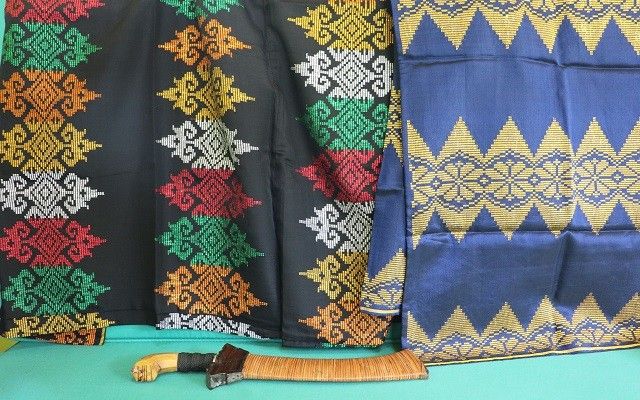Inaul Festival to highlight traditional Maguindanaon textiles

MAGUINDANAO, Philippines — The provincial government will launch the “Inaul Festival” in February to introduce to international markets a hand-woven fabric that designers find fascinating for its radiant colors and quality.
Provincial officials confirmed on Saturday that the yearly Maguindanao “Sagayan Festival,” named after a centuries-old traditional ethnic Maguindanaon war dance, shall be replaced with an “Inaul Festival” featuring the centuries-old loom-weaving industry in the province.
The week-long Sagayan Festival every February was pioneered six years ago by the office of Maguindanao Gov. Esmael Mangudadatu, who is now on his third term.
Various groups have long been promoting the Maguindanaon Inaul fabric, admired for its quality and colorful accents.
The Inaul cloth, just like the Sagayan dance, is a symbol of Maguindanaon culture as the people of the “flooded plains.”
The term flooded plains contextually means Maguindanao, the wetlands that connect to the 220,000-hectare Liguasan Delta surrounded by what are now North Cotabato, Lanao del Sur and Maguindanao provinces.
Mangudadatu said the Maguindanaon Inaul cloth has potential in export markets.
“I hope I can help strengthen very soon the industry through possible interventions my administration can initiate,” Mangudadatu said.
There are hundreds of Maguindanaons keeping Inaul loom-weaving alive, a tradition started by their ancestors and handed down through generations.
“We’ll have Inaul festival, not the usual Sagayan festival in February,” said Ayesha Mangudadatu-Dilangalen, regional tourism secretary of the Autonomous Region in Muslim Mindanao.
The forthcoming Inaul Festival shall be capped off with the same shows, depicting facets of Maguindanao’s Moro, Christian and Lumad communities, that were held during the previous Sagayan festivities.
- Latest





























